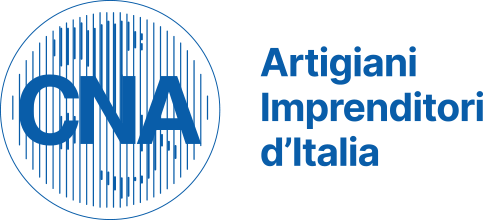This check may be paid through the corporate accounts payable bank account, rather than its payroll account, so you may need to make this entry through the accounts payable system. If you are recording it directly into the general ledger or the payroll journal, then use the same line items already noted for the primary payroll journal entry. Payroll journal entries are used to record the compensation paid to employees. These entries are then incorporated into an entity’s financial statements through the general ledger. When ABC make payment in the first week of new year, they have to reverse the wage payale from the balance sheet a long side with cash.
- Typically the business operates for a year and pays its annual property taxes at the end of that year.
- However, the employees are not expected to receive their owed compensation in the form of cash until the following month, which would be early January in our scenario.
- Generally, one-half of FICA is withheld from employees; the other half comes from your coffers as an expense of the business.
- This means the company must report on its income statement the hourly wages and other payroll expenses that the company incurred (and the employees earned) through December 31.
- Then multiply the gross pay by all applicable tax rates, such as social security, Medicare, and unemployment taxes.
It is not always possible to make and receive payments immediately, they may be late or in advance. Outstanding expenses, prepaid expenses, accrued income & income received in advance are all a result of held-up payments and receipts. But for accrued employee wages, there is a contractual obligation by the company to pay the employees for the services received on time.
What You Need to Calculate Accrued Payroll
Salary expenses are the income statement account, and it records all of the salary expenses that occur during the period or year. However, the salary payables account is the balance sheet account that reports only the unpaid amount. The company makes this journal entry of salaries paid to eliminate the liabilities that it has recorded in the period-end adjusting entry. Generally, one-half of FICA is withheld from employees; the other half comes from your coffers as an expense of the business. The amounts are a little different in 2012 because of the payroll tax break.
- In the context of outstanding rent, it refers to rent due for a period that has already passed.
- The amounts are a little different in 2012 because of the payroll tax break.
- They are also casually known as expenses due but not paid, unpaid expenses, arrears, overdue expenses, etc.
- In short, the difference between salary expense and salary payable is that the salary expense is the total expense for the period while the salary payable is only the amount of remuneration that is due.
It is typical for current liabilities to be settled with current assets such as cash. In this way, they contribute to the calculation of the current ratio and cash ratio. Company-A has a rent obligation of 10,000/month that is due every 10th of the month.
Outstanding salary is a liability for the business, therefore, it is shown on the liability side of the balance sheet. Accounts Summary Table – The following table summarizes the rules of debit and credit and other facts about all of the accounts that you know so far, including those needed for adjusting entries. Payroll accruals are also important for internal accounting because they help your company to determine how much you spent on payroll during any given month. As well as prevent accounting errors such as underpayments, overpayments and also ensures your payroll team stays compliant with regulations. On payday, January 5, the checks will be distributed to the hourly-paid employees.
Do Accrued Expenses Affect an Income Statement?
He has been a manager and an auditor with Deloitte, a big 4 accountancy firm, and holds a degree from Loughborough University. Lita Epstein, who earned her MBA from Emory University’s Goizueta Business School, enjoys helping people develop good financial, investing, and tax planning skills. She designs and teaches online courses and has written more than 20 books, including Bookkeeping For Dummies and Reading Financial Reports For Dummies, both published by Wiley.
The journal entry is debiting wage payable $ 5,000 and credit cash $ 5,000. ABC is a construction company that employs many workers and is paid based on their hour’s work. The amount is $ 5,000 which expect to settle on the first week of new year.
Manual Payments Entry
This means the company must report on its income statement the hourly wages and other payroll expenses that the company incurred (and the employees earned) through December 31. The debit to the wages expense is the cost to the business of the hours the employees have worked for the last three days of the month. The credit to the accrued wages account establishes a liability for the unpaid wages which will be paid the following Monday after the accounting period has ended. When preparing financial statements at the end of an accounting period, you must record unpaid salaries and wages as adjusting entries in the books.
Recognizing Unpaid Salaries and Wages in Financial Statements
At the end of the period, this “expense due but not paid” impacts the financials of the business. Wage is an hourly form of payment that company pays to the workers. Employers often use wages as the sole compensation for workers because it eliminates the need to make complex calculations involving bonuses, profit sharing, and other benefits. This may reduce costs in the short term but is not a very good idea in the long run because it can lead to disputes over entitlement and lower morale. However, in day-to-day accounting vocabulary, a “debt” may be referred to as long-term debt i.e. an obligation that is payable beyond 12 months. Generally, the difference between salary and wage is that salary is a fixed amount and wage is based on the number of hours that an employee works.
The $600 debit is subtracted from the $4,000 credit to get a final balance of $3,400 (credit). This is posted to the Service Revenue T-account what happens to assets if the company pays for notes payable on the credit side (right side). You will notice there is already a credit balance in this account from other revenue transactions in January.
We will assume the amounts in the following Hourly Payroll Entry #4 were remitted on payday. For the workweek of December 18–24, the gross wages are $1,000 for hourly employees in the delivery department and $1,300 for employees in the warehouse. Tax withholdings are hypothetical amounts from federal and state tax withholding tables.
Outstanding Expenses is Which Type of Account?
Software spreadsheets and accounting packages can make calculations easier, especially if you have several employees at different pay grades. An outstanding expense is one that has been incurred but has not yet been paid. Despite the fact that it has not been paid, it belongs to the same accounting period. Therefore, it is added to the debit side of a profit & loss account. Multiply the number of hours that each employee has worked by their hourly wage to calculate the outstanding payroll amount you owe to them. If your employees are salaried, prorate salaries based on a daily rate by calculating the number of days they have worked for which they have not been paid and multiplying it by their daily rate.
There is a “cap” in terms of the duration in which a compensation-related payment can be delayed, unlike delayed payments to suppliers or vendors. Harold Averkamp (CPA, MBA) has worked as a university accounting instructor, accountant, and consultant for more than 25 years. He is the sole author of all the materials on AccountingCoach.com. Ann C. Logue, MBA, is the author of Day Trading For Dummies and Emerging Markets For Dummies. She has written for Barron’s, The New York Times, Newsweek Japan, Wealth Manager, and the International Monetary Fund. She is a lecturer at the Liautaud Graduate School of Business at the University of Illinois at Chicago.







